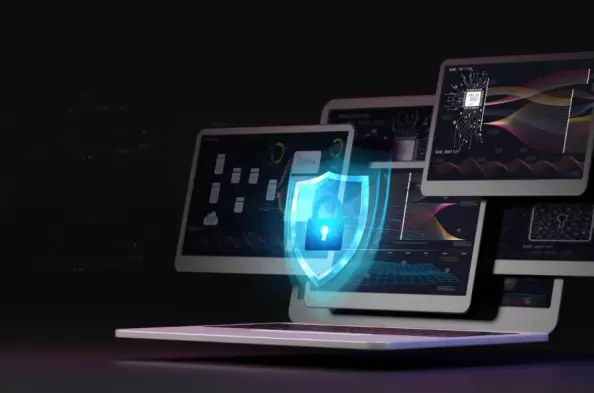In an era where cyber threats continue to advance at an unprecedented rate, endpoint security remains a critical pillar of organizational protection strategies. The landscape of cybersecurity is not only expanding but also evolving, with threat actors employing increasingly sophisticated tactics. Endpoint devices, such as personal computers, mobile phones, and various IoT devices, stand at the frontline of these cyber battles. They are often the initial targets for infiltration, providing a doorway for attackers into more complex IT environments. This constant threat necessitates that organizations remain vigilant, continuously adapting their security measures to safeguard against the ever-changing landscape of cyber threats.
While there has been much emphasis on new threats posed to entire networks, the importance of endpoint security cannot be overstated. These devices are direct targets for cybercriminals who are keen on exploiting any vulnerabilities. Endpoint security must compete for attention against a myriad of other cybersecurity concerns, including the emergence of advanced tools utilized by attackers. With the integration of artificial intelligence in hacking attempts and the exploitation of supply chain vulnerabilities, securing endpoints has become even more challenging. Such is the narrative coming from cybersecurity forums and industry experts, who stress the ongoing importance of robust defense mechanisms for these devices.
The Challenge of Securing Endpoint Devices
The protection of endpoints encompasses a multi-faceted set of challenges that organizations must navigate. As corporations increasingly adopt bring-your-own-device (BYOD) policies, the demand for effective endpoint security measures becomes more pronounced. The predicament lies in safeguarding devices that the organizations themselves may not directly control. This proves particularly difficult when considering the diverse array of devices and applications in use, each representing a potential vector for cyber threats. From legacy systems to the latest mobile technology, each endpoint requires a tailored approach to security.
Identity management has emerged as a crucial aspect of endpoint security, yet it poses a significant challenge for many organizations. There is a continuous struggle to manage identities effectively, especially as attackers develop more sophisticated methods to exploit them. As an increasing number of businesses encounter issues with identity management, the approach to endpoint protection must evolve accordingly. Analysts emphasize the importance of having effective identity verification processes to mitigate cybersecurity risks associated with endpoints. Any lapse in this area can become a critical weakness, attracting exploitation from savvy attackers.
At the same time, vulnerabilities often arise from outdated software and delayed patching processes. Older devices and applications can introduce significant risks, as their security measures are incapable of withstanding modern-day attacks. Vendors frequently cite the need for timely updates and patches, yet many organizations still struggle with prioritization in this area. This oversight leads to an increased attack surface, with unpatched software becoming an open invitation for cyber threats. Keeping software up-to-date is a pivotal aspect of maintaining robust endpoint security, and the failure to do so could have dire consequences for any organization.
Innovations and New Threat Vectors
Despite the obstacles faced in maintaining endpoint security, technological advancements have equipped organizations with better defenses against conventional attacks. Modernized security frameworks have rendered some traditional forms of attack less effective, underscoring the ever-evolving nature of endpoint protection. Within corporate networks, enhanced monitoring capabilities and improved threat detection methodologies have proven essential in combating persistent threats like ransomware. Security innovations, including Endpoint Detection and Response (EDR) tools, have limited the impact of malware and zero-day exploits by facilitating quicker responses and remediation efforts.
Nevertheless, new attack vectors continue to emerge, demanding that organizations adapt their approaches. Notably, the threat of ransomware has evolved into more cunning forms, underscoring the need for constant vigilance. Advanced ransomware strategies involve executing malicious codes under specific conditions, often after successful data exfiltration or other critical points of infiltration. The goal is not merely to disrupt operations but to inflict lasting damage while extracting financial gain. Such shifts necessitate that organizations focus on areas beyond standard endpoint security measures, pointing towards solutions like supply chain security and comprehensive identity and access management.
As a strategic response to these challenges, organizations are investing in innovative solutions such as creating ‘disposable endpoints’ that can be rapidly redeployed following any incident of infection. By leveraging technologies that support swift recovery and protection following breaches or credential compromises, organizations are able to maintain operational resilience. Rapid device recovery, particularly through solutions like Microsoft Autopilot and OneDrive for Business, exemplifies the type of forward-thinking strategy now favored by IT leaders as they prepare for inevitable breaches. These solutions serve to minimize downtime and safeguard against the potential repercussions of an attack, ensuring operations can continue with minimal interruption.
Future Considerations and Strategic Measures
In today’s digital age, where cyber threats evolve rapidly, endpoint security is a crucial element of organizational protection strategies. The cybersecurity landscape is not just expanding but also mutating, with cybercriminals using more advanced tactics. Endpoint devices like computers, smartphones, and IoT gadgets are at the forefront of these cyber confrontations. These devices are frequently the first targets in infiltration attempts, serving as entry points for attackers into more complex IT frameworks. This ever-present threat requires organizations to stay alert and consistently update their security measures to guard against the dynamic cyber threat environment.
Even with significant focus on network-wide threats, the critical role of endpoint security is undeniable. Cybercriminals specifically aim at these devices to exploit weaknesses. Endpoint security faces challenges amid various cybersecurity issues, including sophisticated attacker tools, AI-aided hacking, and supply chain vulnerabilities. Experts and cybersecurity forums emphasize the need for strong defense mechanisms to protect these vulnerable targets in an ever-changing digital world.






